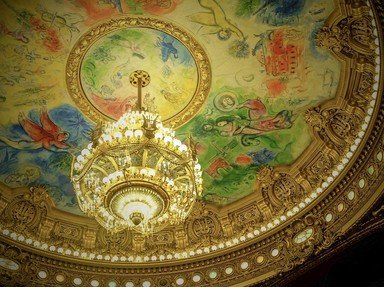Quiz Answer Key and Fun Facts
1. "Die Zauberflote". Or maybe you know it as "The Magic Flute". Which very famous Austrian artist composed it?
2. My first time at La Scala of Milan was for an "opera seria" by Mozart set in ancient Rome. Which work of the great Wolfgang Amadeus includes the characters of the Emperor Vespasian, Publio, Sesto, Vitellia?
3. Mozart again! I saw this one in Vienna. Which opera has the same main character as "The Barber of Seville"?
4. Back at La Scala. Which opera, composed by Umberto Giordano, is set during the French Revolution and has as main character a French poet who, at the end, is guillotined? The title is the poet's name.
5. The fifth opera I saw, always at La Scala, has as main character a legendary libertine who is swallowed by Hell in a dramatic finale that includes also a "Stone Guest". What's the title of this opera, set in Seville, whose libretto was written by Lorenzo Da Ponte?
6. Radames, Amneris, Ancient Egypt, and a famous triumphal march. What Verdi opera is this?
7. This composer wrote two versions of the same opera: "Orfeo e Euridice" in Italian and "Orphée et Eurydice" in French. But he was German. Do you know his name?
8. This Verdi opera, as I saw it, was staged with the main character and his followers dressed like Nazi villains, sort of. In the original version, they were barbarians, led by the man known as "The Scourge of God". Do you remember the name of this barbaric chief who invaded Italy in the V century and was stopped, according to the legend, by Pope Leo X?
9. Enduring this opera till the end was not easy: four hours long, sung in Russian. The title: "Khovanshchina". The composer: the same guy who wrote "Pictures at an Exhibition", that I heard for the first time in the prog-rock version of Emerson Lake and Palmer. Do you remember the name of this Russian artist?
10. If you know how an "Old Occitan lyric poet and musician" was called, maybe you can guess the title of this Verdi opera, that's probably most famous aria (actually a "cabaletta") is "Di quella pira l'orrendo foco". Can you pick the name of this opera that I saw staged for "marionette" (puppets)?
Source: Author
zordy
This quiz was reviewed by FunTrivia editor
agony before going online.
Any errors found in FunTrivia content are routinely corrected through our feedback system.

